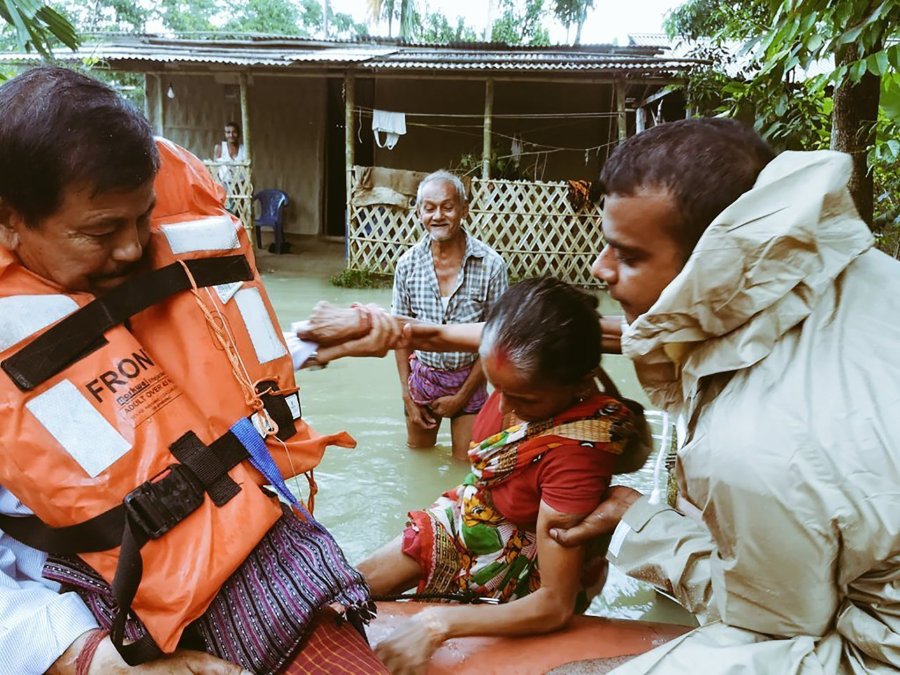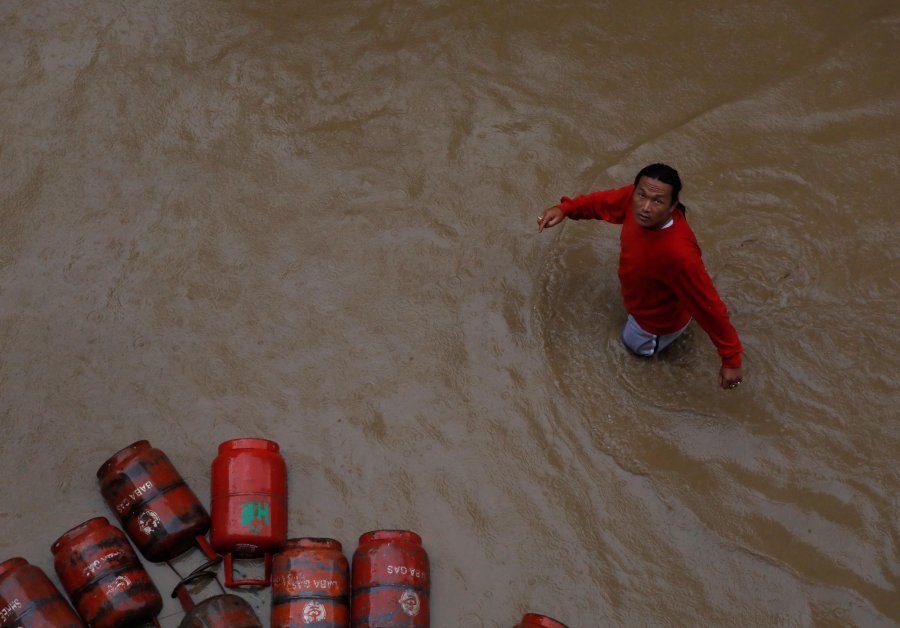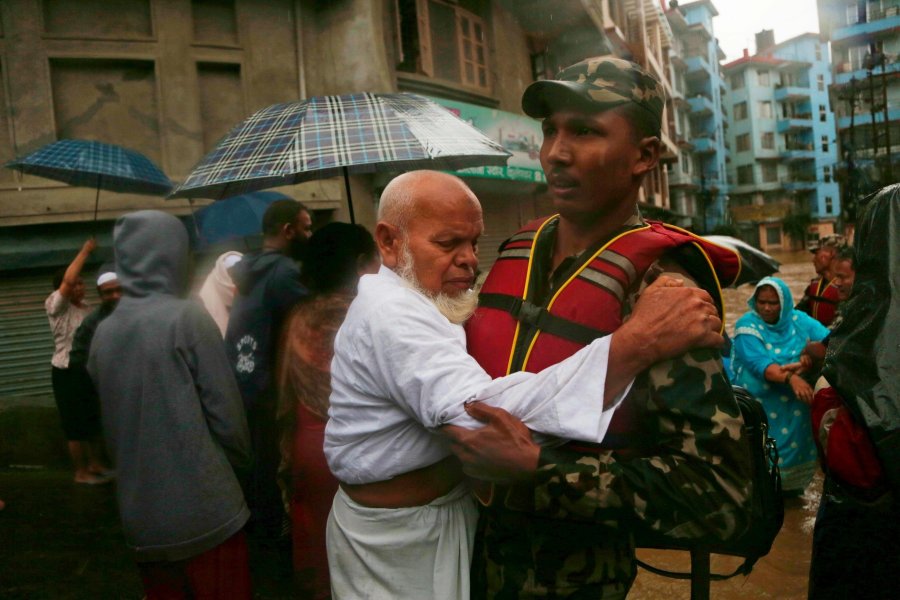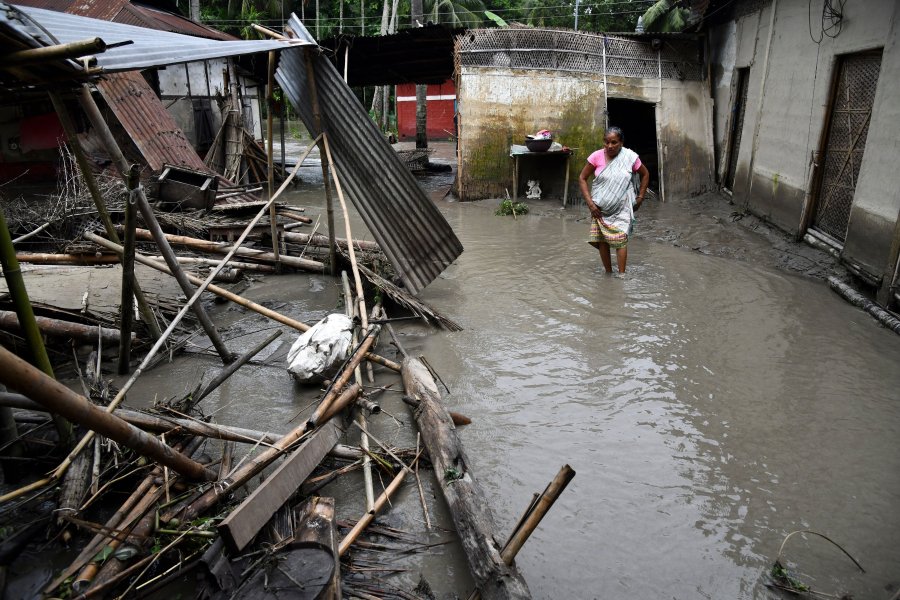At least 88 people have died and tens of thousands have been displaced after torrential monsoon rains triggered floods and landslides across Nepal and parts of South Asia.
At least 64 people have died in Nepal, with a further 31 people identified as missing and more than 2,500 rescued, the country’s Ministry of Home Affairs said Monday morning. Search and rescue efforts have been stepped up, with multiple federal agencies, the Nepalese Army, and paramilitary forces mobilized.
In neighboring India, 14 people have died on the northeastern state of Bihar, which lies on the India-Nepal border. The death toll there is “bound to increase,” said Pratyaya Amrit, a senior official at the Bihar Disaster Management Department, as flood waters retreat and reveal the true extent of the damage.
A total of 19.6 million people across 12 districts have been affected by the flash floods, Amrit added. About 46,000 people in Bihar have been shifted to temporary shelters, and national and state disaster relief teams have deployed in the region.
In Bangladesh, which borders India, 40,000 people in rural low-lying areas have been directly affected by the floods, said Enamur Rahman, the Bangladeshi State Minister for Disaster Management and Relief. They are bracing for the worst — many of India’s rivers flow into Bangladesh, so continuous rains could bring the flooding across the border.
Images on social media of the worst-hit areas, including Nepal’s mountainous Kathmandu Valley and the lowland Terai region on the southern border next to India, show roads and cars submerged in muddy water. Some residents appear trapped in their homes, sheltering on rooftops as floodwater washes past their doorsteps. Those who do attempt escape carry bundles of belongings on their heads as they wade through chest-deep water.
Already, 16,520 households in Nepal have been displaced, according to the Ministry of Home Affairs. Rescue teams continue to evacuate residents, pushing inflatable dinghies through flooded streets and helping children and the elderly to safer areas.
The monsoon rains began on Thursday, inundating low-lying towns and villages, with tens of thousands evacuated after major rivers swelled to dangerous levels, according to the Nepalese Ministry of Home Affairs.
Regions of Nepal on the southern border, like the Bara District, have seen more than 400 millimeters (15.75 inches) of rain in the past few days, according to satellite estimates. The rain is still pouring, with some western areas expected to receive up to 250 millimeters (9.84 inches) in the next 48 hours, said the Nepal Department of Hydrology and Meteorology.
The monsoon rains bring both relief and disaster every year — they bring much-needed water to drought-hit regions, but the sudden downpours also trigger floods and landslides, especially fatal in areas without sufficient water storage infrastructure.
In 2017, Nepal had some of the heaviest monsoon rain in recent years, with floods killing at least 143 people and damaging nearly 80,000 houses. Another severe monsoon season in 2014 killed over 100 people in Nepal, and displaced more than 17,000 families.
Indian cities also face deadly monsoon floods almost every year. Dozens have died just this month in the western Indian state of Maharashtra, with houses and transport hubs washed away.








